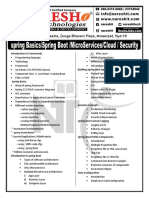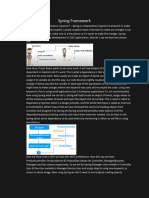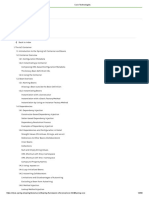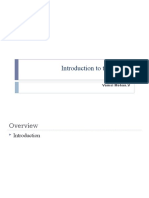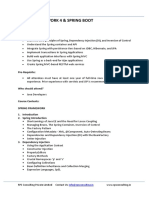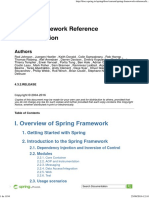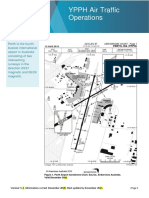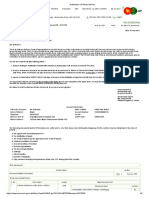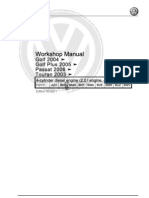0% found this document useful (0 votes)
8 views39 pagesSpring Framework
The document provides a comprehensive guide to the Spring Framework, covering its core concepts, including Inversion of Control (IoC) and Aspect-Oriented Programming (AOP), along with practical examples. It outlines a structured learning roadmap, detailing various modules such as IoC Container, Dependency Injection, Bean Lifecycle, ApplicationContext, and advanced features. Additionally, it includes implementation points and configuration methods for effective Spring application development.
Uploaded by
seshu prathiCopyright
© © All Rights Reserved
We take content rights seriously. If you suspect this is your content, claim it here.
Available Formats
Download as DOCX, PDF, TXT or read online on Scribd
0% found this document useful (0 votes)
8 views39 pagesSpring Framework
The document provides a comprehensive guide to the Spring Framework, covering its core concepts, including Inversion of Control (IoC) and Aspect-Oriented Programming (AOP), along with practical examples. It outlines a structured learning roadmap, detailing various modules such as IoC Container, Dependency Injection, Bean Lifecycle, ApplicationContext, and advanced features. Additionally, it includes implementation points and configuration methods for effective Spring application development.
Uploaded by
seshu prathiCopyright
© © All Rights Reserved
We take content rights seriously. If you suspect this is your content, claim it here.
Available Formats
Download as DOCX, PDF, TXT or read online on Scribd
/ 39





